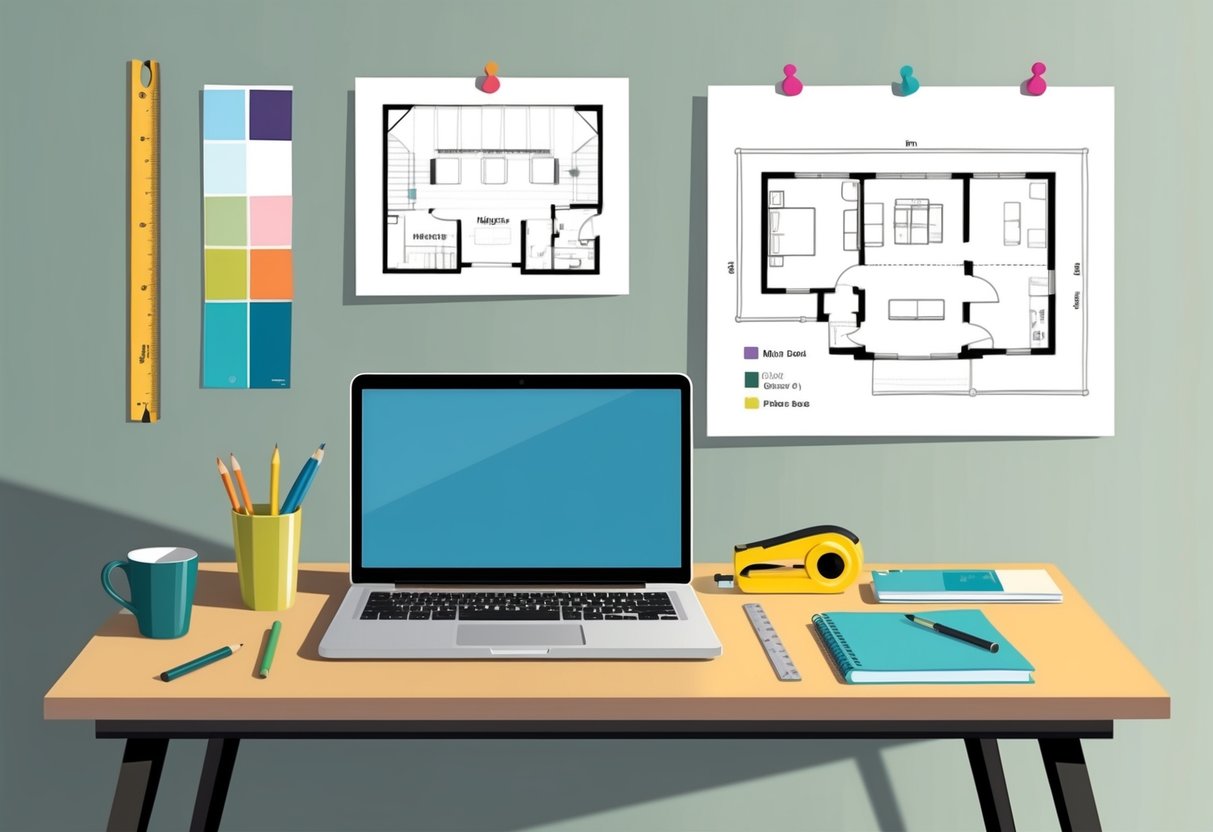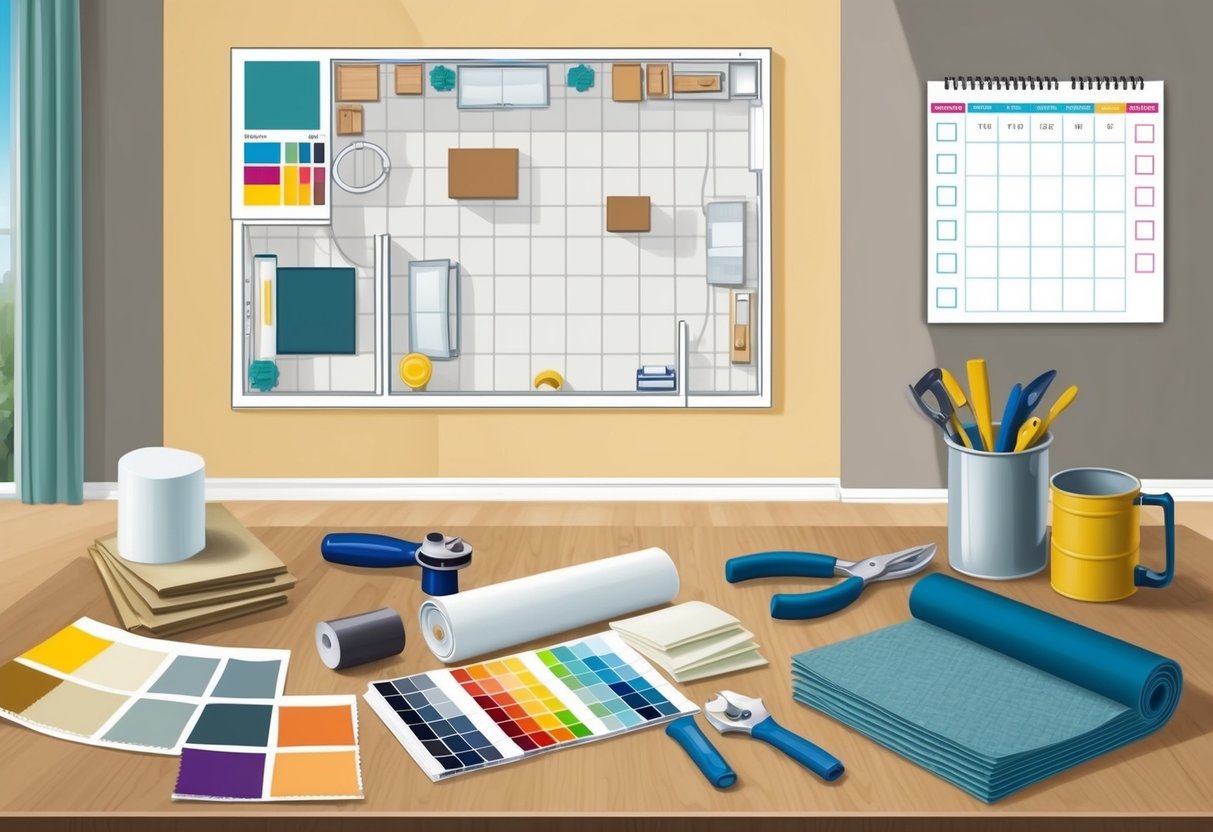
Selecting Appliances and Fixtures
Choosing the right appliances and fixtures ensures the kitchen remodel supports lifestyle needs and energy efficiency. Homeowners should assess their cooking habits before selecting essential items like ranges, refrigerators, and dishwashers.
Modern options often blend advanced technology with energy-saving features. It’s important to match appliance sizes to the planned layout, especially in more compact kitchens.
Built-in or integrated appliances save space and create a seamless look. Stainless steel, energy-efficient LED lighting, and touch-activated faucets can improve both performance and appearance.
When choosing fixtures, consider finishes and hardware for sinks, cabinets, and lighting. Coordinating these details with the kitchen’s color palette brings cohesiveness to the overall remodel design.
Maximizing Storage and Functionality
Maximizing storage is essential in every kitchen remodel. Custom or semi-custom cabinets allow homeowners to configure shelves, pull-outs, and drawers for every item, reducing clutter and optimizing space.
Utilizing vertical storage, deep drawers, and dedicated zones for pots, utensils, and small appliances keeps everything accessible. Consider adding a pantry space, even a small one, to increase dry goods storage.
Open shelving, sliding racks, and corner units can make hard-to-reach areas practical. Islands and peninsulas often provide extra cabinets and countertop area for meal preparation and serving.
Simple upgrades such as drawer organizers, under-cabinet lighting, and built-in recycling bins further improve usability. A detailed storage planning guide can help identify solutions tailored to individual kitchen design needs.
Coordinating Home Renovation Logistics

Careful coordination of logistics can reduce delays, control costs, and ensure work stays on schedule. Effective execution hinges on smart scheduling and thorough management of permits or approvals needed for a remodeling project.
Scheduling the Remodel
Thorough scheduling is key to minimizing disruptions during any home renovation. Homeowners should create a detailed project timeline that accounts for each phase such as demolition, structural work, installations, and finishing.
Using tools like spreadsheets or renovation management software makes tracking milestones easier. It is essential to communicate dates for contractor arrivals, material deliveries, and inspections.
Consider factors like lead time for specialty products and possible delays due to weather. Allow some buffer time in the schedule for unexpected issues.
Sharing this timeline with all parties—contractors, suppliers, and inspectors—keeps everyone aligned. A visual calendar or a simple table listing key dates and responsible parties can further clarify the process.
For larger projects, weekly check-ins with contractors keep progress on track. Setting expectations from the start helps avoid miscommunication and costly delays, as noted by planning guides on home remodeling logistics.
Managing Permits and Approvals
Proper handling of permits and approvals is non-negotiable for a legal and safe remodeling project. Depending on the scope, permits may include electrical, plumbing, or structural changes.
Homeowners should research local codes or consult their contractor about which documents are required for their home renovation. Start the permit application process well in advance, as review times vary by municipality.
Submit clear, accurate project plans and respond quickly to requests for clarification from local officials. Delays in permits can halt work or result in fines.
Keeping digital copies of all approvals and ensuring they are on site is useful for inspections. Staying organized throughout ensures the remodeling project proceeds smoothly and meets all safety and zoning standards, as highlighted in this home renovation step-by-step guide.
Furnishing and Decorating Your Space

Creating a functional and beautiful home involves thoughtful furniture selection and the deliberate use of decor and accessories. Smart choices can help maximize space, improve comfort, and bring personality to any remodel.
Choosing Essential Furniture
Essential furniture lays the foundation for every room. Start by considering the room’s size, purpose, and your daily habits.
Prioritize practical pieces that fit the space and serve a clear function. For example, a modular sectional can adapt to a living room’s changing needs, while a sturdy dining table anchors the dining area.
Choosing the right materials is key. Look for furniture that balances durability and aesthetic appeal, especially in high-traffic spaces.
Those with children or pets might opt for stain-resistant fabrics and solid wood finishes. Neutral tones provide flexibility for future decorating changes, while accent chairs, shelves, or side tables allow for added function and visual interest.
Measure every piece before purchasing to ensure it fits easily within pathways and leaves enough space to move comfortably. Sketching a layout or using online planning tools helps avoid overcrowding.
For compact spaces, consider multi-purpose items like storage ottomans or sofa beds. The aim is to blend style, comfort, and function in every area of your home’s design.
Incorporating Decor and Accessories
Decor and accessories inject personality and warmth into a remodeled home. Choose items that reflect your taste while tying together the color scheme, style, and overall mood of each room.
For example, bold art pieces can become focal points, while textured throw blankets and cushions add comfort and variety. Layering is key for a visually pleasing atmosphere.
Combine lighting such as floor lamps, table lamps, and overhead fixtures to create dimension and adjust ambiance. Use accent rugs to define seating zones or add softness underfoot.
Group decorative items like vases, candles, or sculptures in odd numbers for a more balanced look. Consider wall shelves or gallery displays to showcase personal mementos and artwork without crowding surfaces.
Adding greenery, such as potted plants or fresh flowers, introduces color and life to your space. Stay mindful of clutter by curating and rotating accessories regularly.
For more inspiration on organizing and decorating ideas, visit this comprehensive guide to home remodeling.